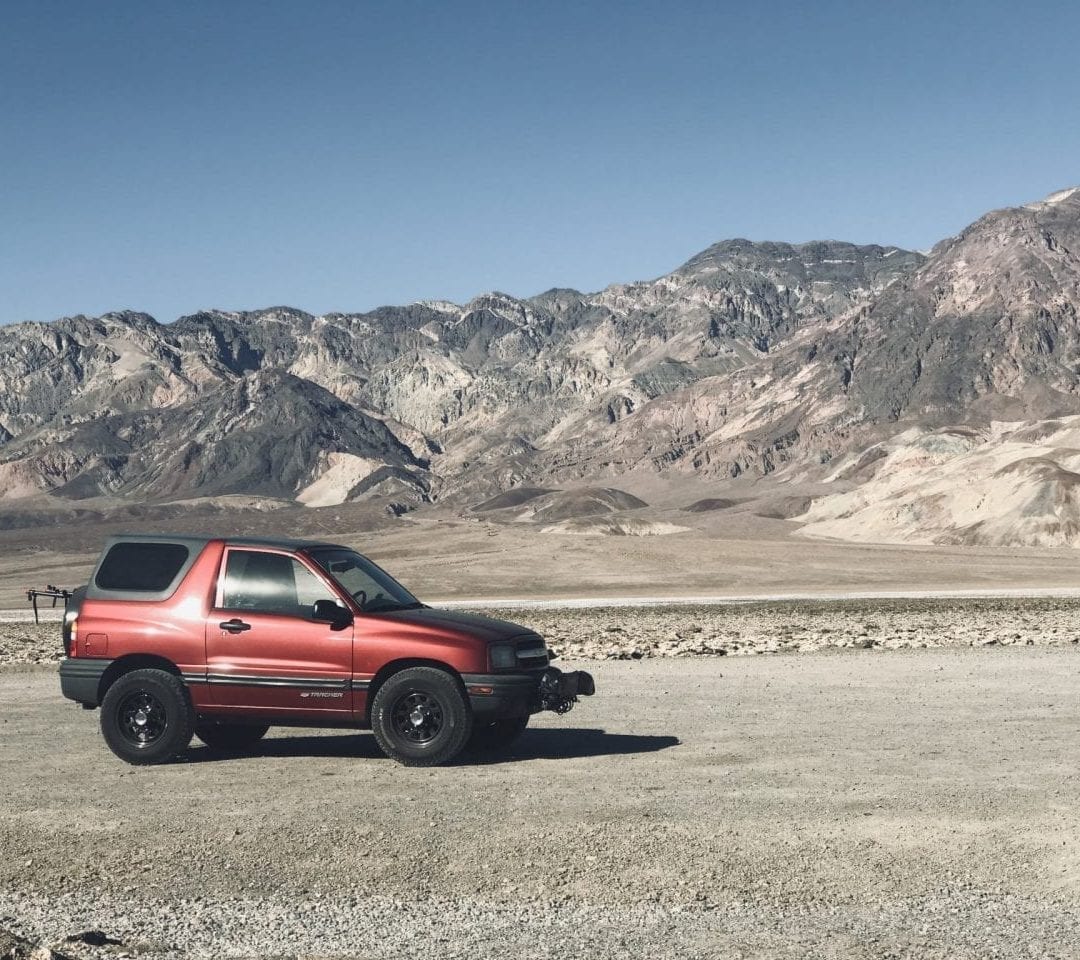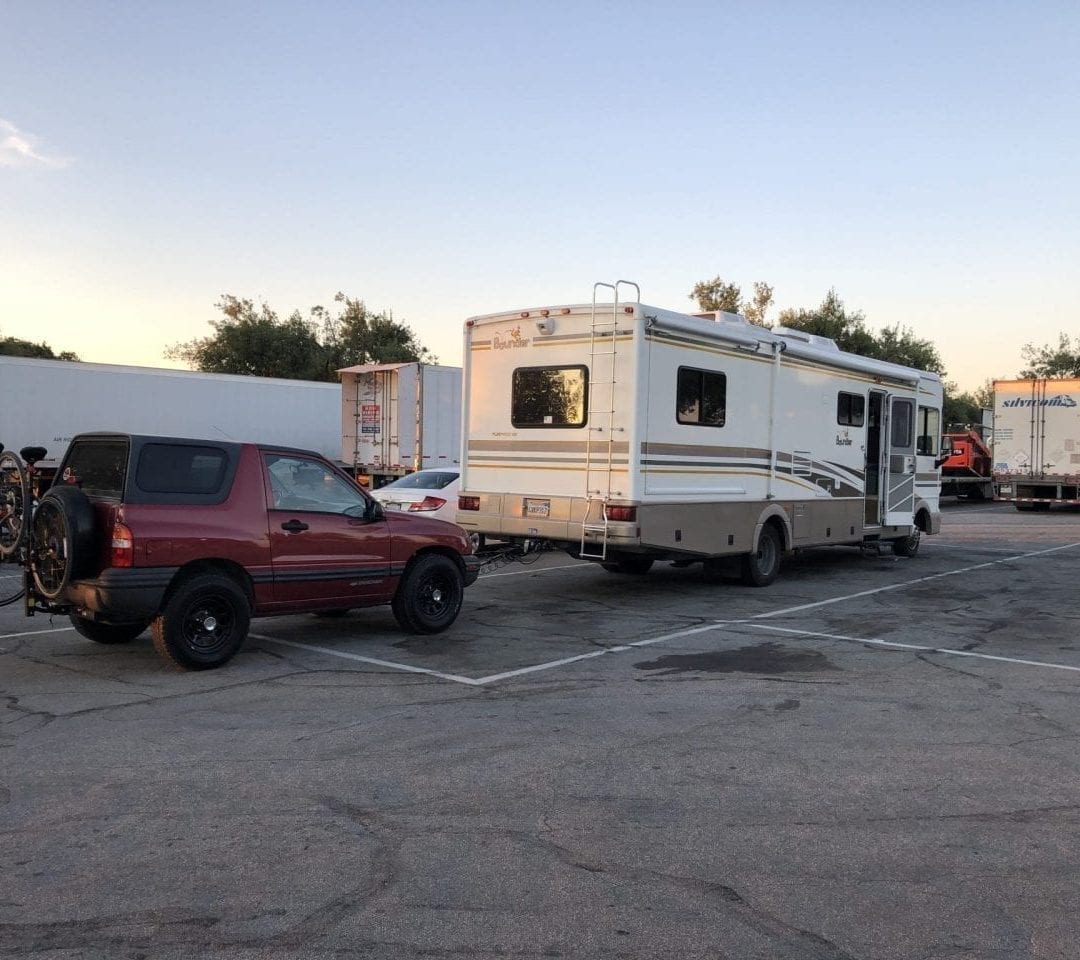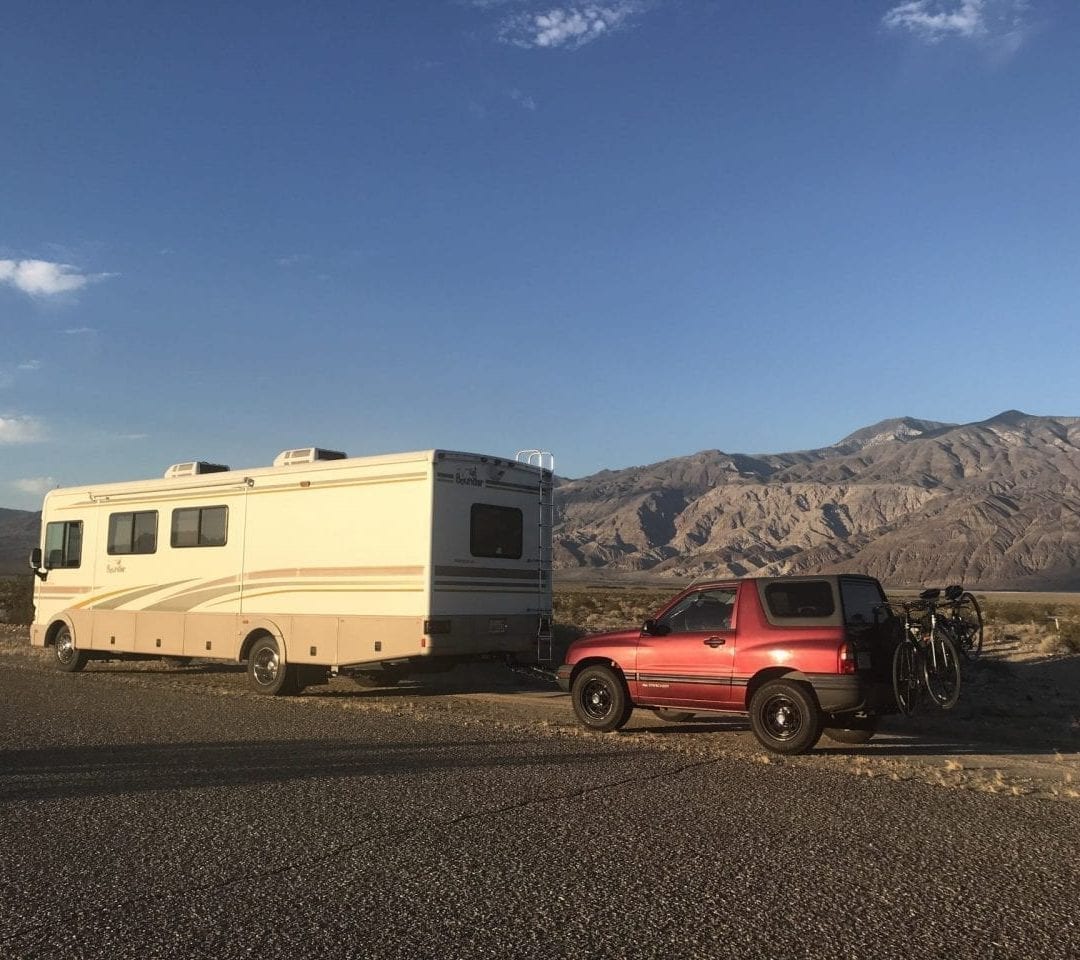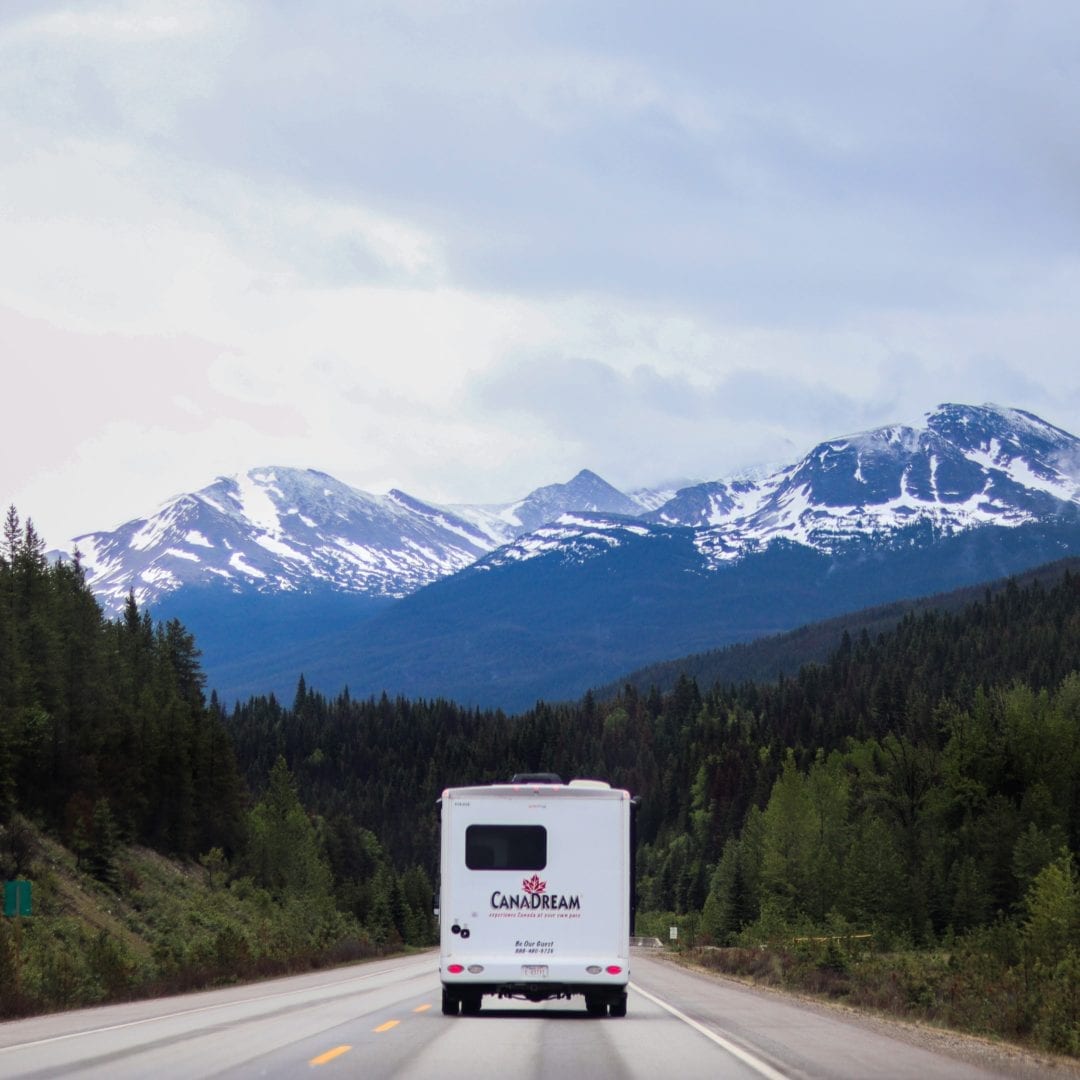As RV newbies, we didn’t know much about towing vehicles or logistics of an RV road trip. However, we knew that it will not be easy to get around 19 national parks in a 31 ft motor home. First of all, it is pretty big and may be hard to maneuver on narrow roads. Plus, certain roads don’t even allow vehicles of this length (though we have not encountered too many of these in our trip). Second and probably most important, packing and unpacking the motor home every time we need to go to a park, drive to a trailhead or for a grocery run seems like a lot of work and takes away the “home” element of RV’ing.
So, we ran through a couple of options to get around while our RV is set up and parked (and we had only two weeks to decide since our trip was coming up very soon) –
Bikes
This seemed like a good idea at first, until we penciled in our itinerary and RV sites, most of which were too far from the heart of national parks. When you add photo equipment and grocery runs into the equation, bikes were out of the question. We did, however, ended up bringing our bikes on this trip.
Scooters or electric bikes
Even though some models have a range of 10-30 miles, which seemed enough at first, once we looked at RV parks and terrain, this option was crossed out from the list, just as regular bikes.
Motorcycle
We had high hopes for motorcycles and were counting on this as out first choice. We looked around some dealerships, combed through Craigslist, and find a few motorcycles that seemed like a good fit. The problem came up once we realized that 49cc motobike vs 150 cc motorbike are actually different vehicle classes that require different driver’s licenses (plus, add the complexities of license regulations from one DMV to another). We quickly realized 49cc, which didn’t require a separate motorcycle license in California, turned out to be too small to carry two people with equipment and forget about grocery runs. A larger motorcycle of 150cc was a more suitable option. But, in California it takes 1-2 months (or longer) to get an appointment at DMV to actually apply for a motorcycle license! Since our trip was only 2 weeks away, this was a problem.
Finally, our eyes turned towards towing a car.
Towing on a dolly
Since we didn’t have a car with a tow package, this was our first option. But the issue was that this would add another piece to our already long RV train. We looked into purchasing a used smaller car like a VW bug or a Mini cooper, but were not sure if that will be practical in the long run, since we didn’t need a small car for our every day life in the future.
Flat tow
Flat tow looked easier than towing on a dolly. The problem we ran into was that most of the automatic cars can’t be towed, and buying a manual didn’t seem like a good option for us, as it won’t be very useful after the RV trip. Again, we looked into buying a used small manual car. However, installing a flat tow package is pretty expensive and the quotes we got in San Francisco/Bay Area were around $5K. This makes sense for longer RV trips or RV living, but seemed like a larger investment for a three-month trip. We talked to Camping world, local RV repair shops, and even contacted a shop in Arizona that specializes in flat tow set ups.
As we were running out of time to make a decision, we came across an amazing flat tow option on Craigslist – 1998 Chevy Tracker. It hit all the must haves on our list – automatic, 4×4, plenty of space, and already had a Stowmaster tow bar installed!!! Doesn’t get any better than that.
In the end, we decided on purchasing the Chevy and flat towing. Would we recommend it? Depends on your itinerary and travel habits, but if you are planning to RV a lot, flat tow is an easy option that is worth the investment.
Why flat RV towING worked for us
- We were unbelievably lucky to find an automatic car with a flat tow package already installed!
- Flat tow is actually quite easy in terms of driving (just remember to make wider turns and never backup). It also required only 10 minutes to set up.
- We stayed in RV sites that were outside of national parks within 10-30 mile radius (the trip was planned last minute and, of course, all in-park sites were unavailable by then).
- We like the freedom of easily going from one place to another at any time and normally carry a lot of equipment
Why Bike/Scooters or electric bikes/motorcycle didn’t work for us
- If you are staying outside of the parks, there isn’t enough range you can cover in a scooter or bicycle. It will limit you to 10-20 miles at the most. Many of the campgrounds we stayed at were much further away.
- It does not allow for a lot of equipment to carried with you, like hiking gear, supplies etc.
- This one is a safety concern – its not the best choice to ride a two wheeler if you stay for sunsets or go early to catch a sunrise and have to drive in the dark.



